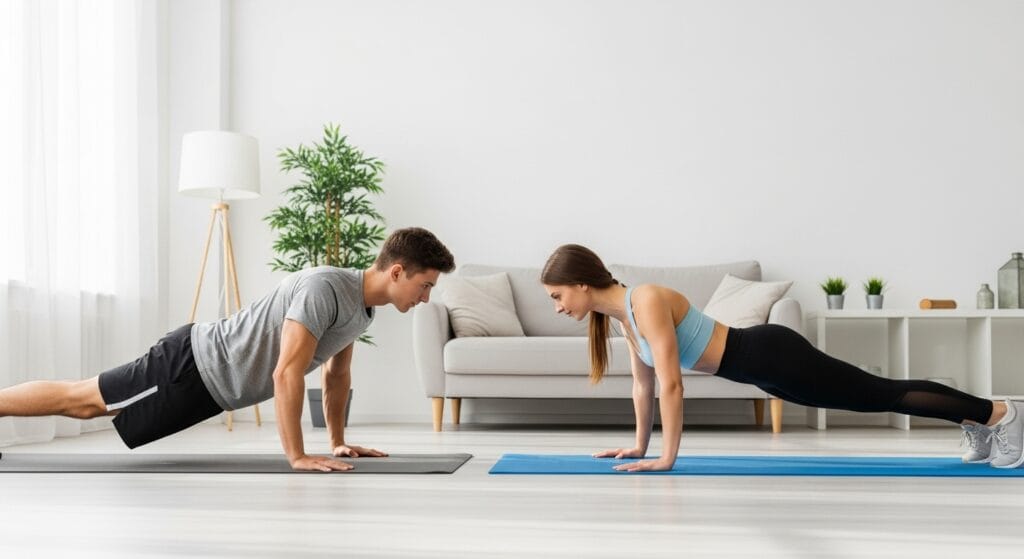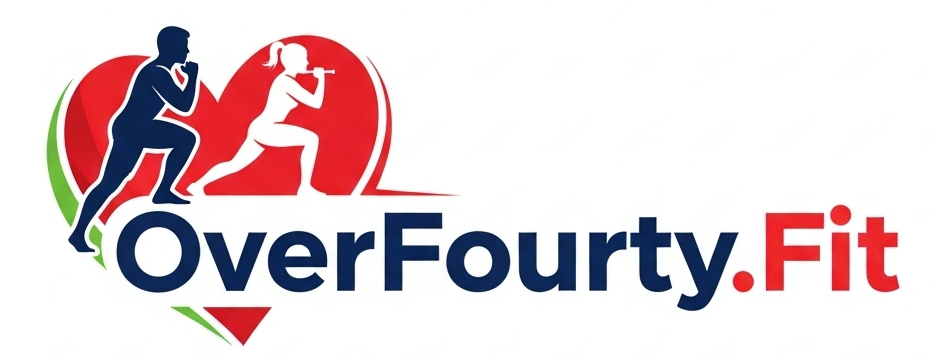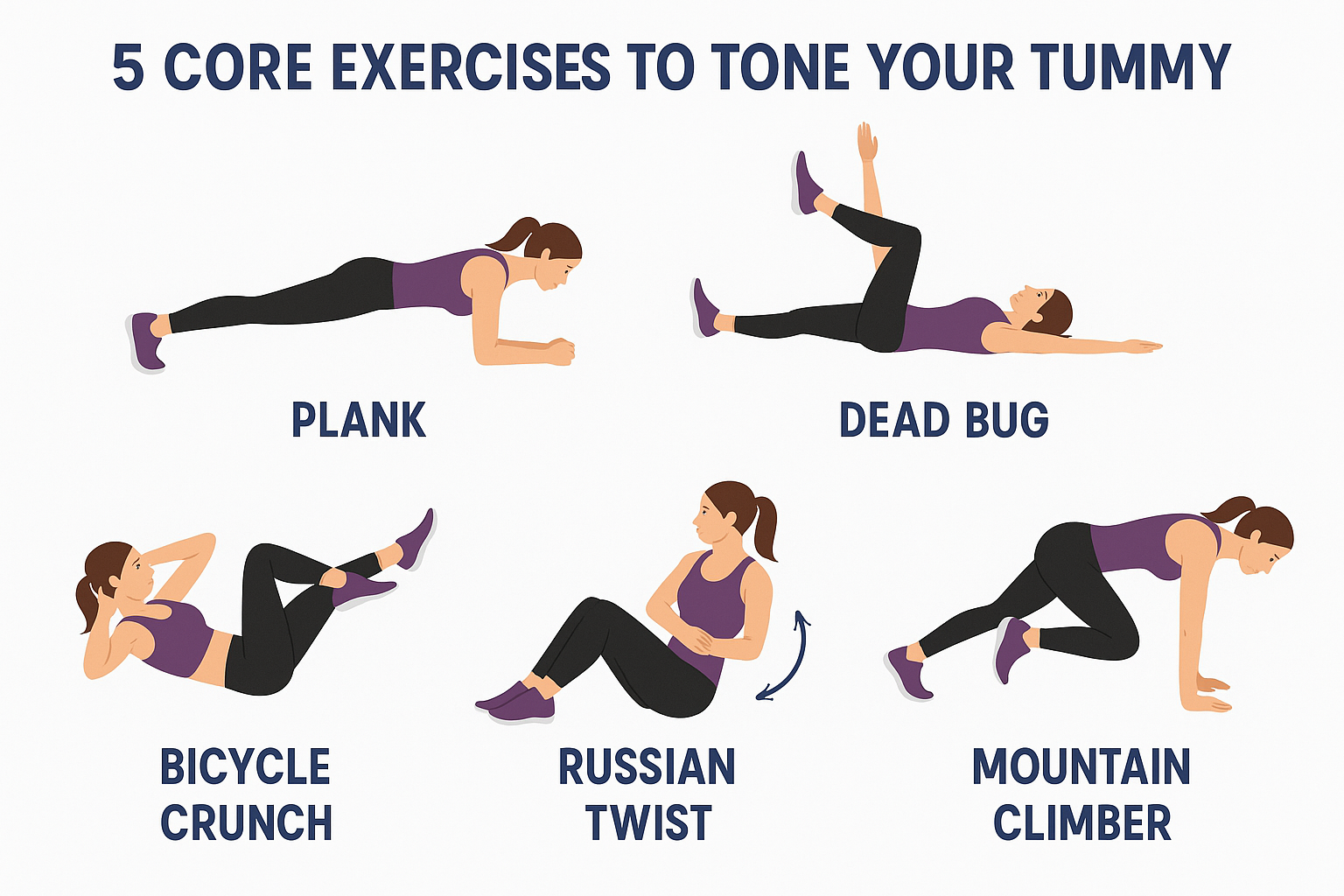Calisthenics Workout Plan: Build Strength With Your Bodyweight
Calisthenics uses your own bodyweight to build strength, endurance, and mobility. You do not need machines or heavy equipment. A structured calisthenics workout plan makes training efficient and progressive.
What Is Calisthenics Training
Calisthenics is strength training with bodyweight exercises. Push-ups, pull-ups, dips, squats, planks, and lunges are its foundation. You can train indoors or outdoors.
Unlike gym workouts, calisthenics develops functional strength. Your muscles work together in natural patterns. Movements improve balance, coordination, and flexibility.
Studies show calisthenics supports muscle growth and endurance when done consistently (Alves et al., 2018).
Benefits of a Calisthenics Workout Plan
- Builds lean muscle through progressive overload
- Improves joint mobility and flexibility
- Strengthens core stability
- Trains’ balance and coordination
- Requires no equipment for a calisthenics workout
- Adaptable for beginners and advanced athletes
- Enhances cardiovascular endurance with dynamic routines
Research in the Journal of Human Kinetics found calisthenics improved functional movement and body composition in adults (Silva-Batista et al., 2015).

Beginner Calisthenics Workout Plan
Beginner Calisthenics Workout Plan: Three sessions per week. Keep focus on form and controlled reps. Add rest days between sessions.
Routine:
- Push-ups: 3 sets of 10–15
- Bodyweight squats: 3 sets of 15–20
- Assisted or negative pull-ups: 3 sets of 6–8
- Chair dips: 3 sets of 8–12
- Plank: 3 rounds of 30 seconds
Start with easier variations like knee push-ups or incline push-ups if needed.
Intermediate and Advanced Calisthenics Routine
After 8 to 12 weeks, progress to harder calisthenics exercises. Train four days weekly. Use a split to target different groups.
Example Split:
- Day 1 Push: Dips, archer push-ups, pseudo planche push-ups, handstand training
- Day 2 Pull: Pull-ups, Australian rows, chin-ups, front lever progressions
- Day 3 Legs: Pistol squats, lunges, Bulgarian split squats, calf raises
- Day 4 Core + Skills: Hollow holds, hanging leg raises, planche progressions, L-sit
Advanced calisthenics skills like muscle-ups, planche holds, and handstand push-ups require patience and progression.
30-Day Calisthenics Workout Plan
Consistency drives results. A 30-day calisthenics workout plan builds routine and discipline.
Weekly Schedule:
- Monday: Full-body calisthenics workout
- Tuesday: Core and mobility training
- Wednesday: Rest
- Thursday: Push workout + skill training
- Friday: Pull workout + legs
- Saturday: Cardio or endurance training
- Sunday: Rest or stretching
Repeat for four weeks. Increase volume or switch to harder variations for progression.
How to Progress in Calisthenics
Progressive overload in calisthenics ensures muscle and strength gains.
Ways to progress:
- Add more reps or sets
- Shorten rest times
- Use harder calisthenics variations
- Train for static holds like planche, front lever, and handstand
- Track calisthenics skills in a log
Calisthenics vs Gym Workouts
Both methods build strength. The choice depends on goals.
Calisthenics Advantages:
- Builds functional strength and mobility
- Requires no gym equipment
- Improves balance and body control
- Enhances core strength
Gym Advantages:
- Allows progressive overload with weights
- Easier for muscle isolation
- Supports hypertrophy goals
Some combine both. Use calisthenics for functional control and weightlifting for targeted hypertrophy.
Tips to Stay Consistent
- Train at set times
- Warm up before every session
- Track reps, sets, and progress
- Focus on form before harder variations
- Sleep and recover well
- Set small goals like 20 push-ups or a 2-minute plank
Key Takeaways
- Calisthenics workout plan builds strength and mobility with no equipment
- Beginner calisthenics plan uses push-ups, squats, dips, planks, and pull-ups
- Intermediate calisthenics routine adds pistol squats, archer push-ups, and handstand progressions
- A 30-day calisthenics workout plan builds discipline and consistency
- Progressive overload and harder calisthenics skills ensure growth
- Both calisthenics and gym workouts are effective for different goals
Conclusion
A calisthenics workout plan builds strength, mobility, and endurance with no equipment. Beginners start with push-ups, squats, dips, planks, and pull-ups. Progress by adding harder variations and tracking reps.
A 30-day schedule helps form consistent training habits. Over time, you move toward advanced skills like handstands, pistol squats, and muscle-ups. Whether your goal is strength, endurance, or muscle growth, calisthenics provides a practical system to improve performance and body control.
FAQs
Can You Build Muscle With Calisthenics?
Yes. Progressive overload and consistent calisthenics training increase muscle growth. Harder variations like dips, pull-ups, and pistol squats make muscles adapt and grow.
How Many Days Per Week Should You Train in Calisthenics?
Beginners train 3 to 4 days. Advanced athletes train 5 to 6 days with split routines. Recovery days are essential for muscle repair and strength gains.
Is Calisthenics Better Than Weightlifting?
Both methods are effective. Calisthenics develops functional strength, mobility, and body control. Weightlifting allows precise progression with external loads. Your choice depends on your goals.
Can Beginners Do Calisthenics at Home?
Yes. Push-ups, squats, planks, and chair dips require no equipment. A beginner can follow a home calisthenics workout plan with minimal space.
What Is a Good 30-Day Calisthenics Workout Plan?
A strong 30-day calisthenics workout plan includes 4 to 5 sessions per week. Train push, pull, legs, and core, with rest days for recovery. Follow a schedule and increase reps or progressions weekly.
Can You Build Muscle by Only Doing Calisthenics?
Yes. Calisthenics builds muscle when you apply progressive overload. Increase reps, add sets, shorten rest, or use harder variations like archer push-ups and pistol squats. Many athletes reach high levels of muscle mass with bodyweight training alone.
What’s a Good Calisthenics Workout Plan?
A solid calisthenics workout plan includes push, pull, legs, and core. Example routine:
- Push-ups: 3 sets of 10–15
- Pull-ups or rows: 3 sets of 6–10
- Squats or lunges: 3 sets of 15–20
- Dips: 3 sets of 8–12
- Plank or hollow hold: 3 rounds of 30–60 seconds
Do this 3 to 4 days per week, adding difficulty over time.
What Is the 80/20 Rule in Calisthenics?
The 80/20 rule means 80 percent of your results come from 20 percent of the core calisthenics exercises. Focus on basics like push-ups, pull-ups, squats, dips, and planks. These movements deliver most of the progress. Advanced skills are useful, but the fundamentals drive growth.
Does the 28 Day Calisthenics Work?
Yes, but with limits. A 28-day calisthenics plan builds habit, improves strength, and enhances endurance. It helps beginners see progress fast. Long-term results require training beyond 28 days with progressive overload and structured routines.







![EoS Fitness 2025: Best Gym Membership for [Arizona/Florida/Texas] 8 EoS Fitness](https://overfourty.fit/wp-content/uploads/2025/05/EoS-Fitness-1-768x512.jpg)